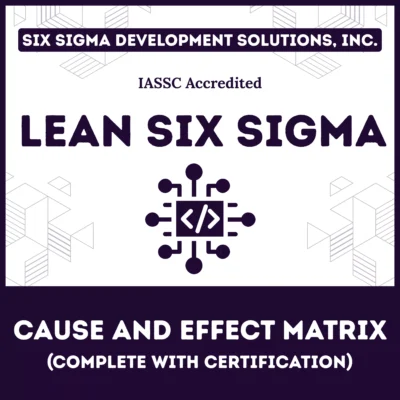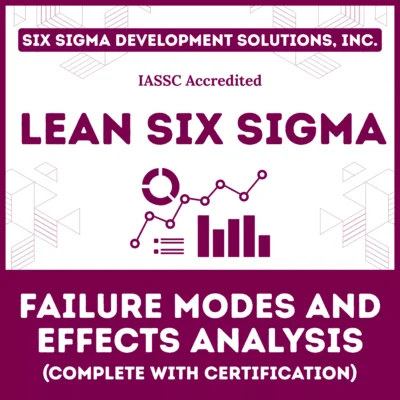Customer requirements are the specific needs and expectations that customers have for a product or service. They define what customers want and how they will evaluate whether a product or service meets their needs. Understanding these requirements is crucial for businesses to develop products and services that satisfy customers and drive customer loyalty.
Table of contents
What are Customer Requirements?
Customer requirements refer to the specific expectations, needs, and desires that customers have when interacting with a product, service, or brand. These requirements guide businesses in shaping their offerings to meet the expectations of their customers.
Meeting customer requirements ensures satisfaction, loyalty, and long-term business success.
Importance of Customer Requirements
Customer requirements are the foundation of successful product or service development. Without understanding what the customer wants or needs, businesses may fail to create meaningful products, leading to dissatisfaction and ultimately losing market share.
By focusing on customer requirements, businesses can ensure they align their products or services with the expectations of their target audience. It builds a stronger connection between a brand and its customers, leading to greater customer loyalty and trust.
Categories of Customer Requirements
Customer requirements can be broadly classified into two main categories:
Tangible Functional Requirements
These are the measurable or physical features and specifications that customers expect from a product or service. They focus on the core functionalities that customers expect, such as the performance of a product, its size, durability, and price.
For example, when customers purchase a laptop, they expect specific features such as a high-resolution display, sufficient storage, and fast processing speed. In services, tangible requirements could include delivering a service on time or offering a specific number of customer support hours.
Intangible Requirements
Intangible requirements refer to the non-physical aspects that influence a customer’s overall satisfaction. These requirements are not directly measurable but play a significant role in shaping the customer experience.
Examples of intangible requirements include emotional factors such as brand reputation, customer service, and user experience. A customer might choose a particular smartphone brand because of its reputation for innovation, or they may prefer a certain online retailer because of its easy return policy and responsive customer service.
Different Levels of Customer Requirements
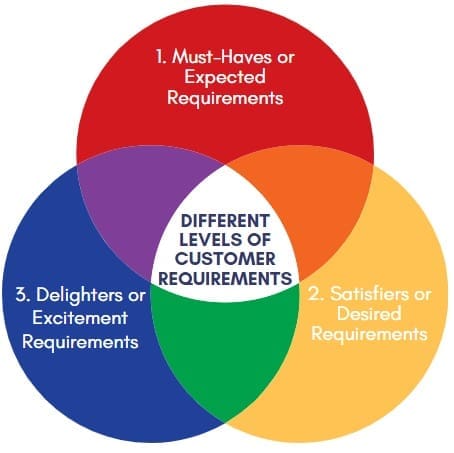
Customer requirements can vary significantly in terms of importance. Some are essential, while others enhance satisfaction without being critical. These levels can be categorized as:
- Must-Haves or Expected Requirements
These are the basic features or services that customers expect without question. They are essential to meet the fundamental needs of the customer. If these requirements are not met, customers will be dissatisfied, but their presence alone doesn’t significantly enhance satisfaction.
For example, when staying at a hotel, customers expect to have access to basic amenities like clean beds, running water, and a secure environment. These are basic expectations, and their absence will lead to dissatisfaction. - Satisfiers or Desired Requirements
These are the features or services that customers desire but are not strictly necessary. Their presence makes the product or service more attractive, enhancing the customer experience. However, the lack of these features won’t lead to dissatisfaction.
An example might be a customer at a coffee shop who desires a specific brand of milk for their coffee. While it adds to their satisfaction, they will not be unhappy if it’s unavailable. - Delighters or Excitement Requirements
These are unexpected features or services that go above and beyond customer expectations. Delighters often surprise customers in a positive way and can lead to a high level of customer satisfaction, loyalty, and positive word-of-mouth.
For example, a customer at a restaurant who receives a complimentary dessert as part of a promotion might be delighted. While the customer didn’t expect this, it enhances their overall experience and can encourage future visits.
How to Identify Customer Requirements?
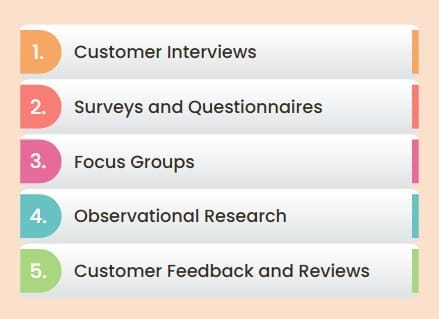
Understanding and meeting customer requirements requires a thorough and systematic approach. The following methods are commonly used to identify customer needs:
- Customer Interviews
Interviews provide an in-depth understanding of customer needs and preferences. By speaking directly to customers, businesses can gather valuable qualitative data and explore the reasons behind specific expectations. - Surveys and Questionnaires
Surveys are an efficient way to gather data from a large group of customers. These tools allow businesses to ask targeted questions about customer satisfaction, preferences, and expectations. The data collected can be analyzed to identify common trends and patterns. - Focus Groups
Focus groups bring together a small, diverse group of customers to discuss their experiences and needs. This qualitative research method provides rich insights into customer perceptions, desires, and frustrations. - Observational Research
Observational research involves watching customers as they interact with a product or service. This method can uncover unspoken needs or pain points that customers might not articulate in interviews or surveys. It helps businesses understand how customers use their products or services in real-world settings. - Customer Feedback and Reviews
Analyzing customer feedback through reviews, social media comments, and support tickets can offer valuable insights into customer needs. These feedback sources can reveal areas for improvement and help businesses identify recurring themes that indicate customer expectations.
Why Understanding Customer Requirements is Critical?
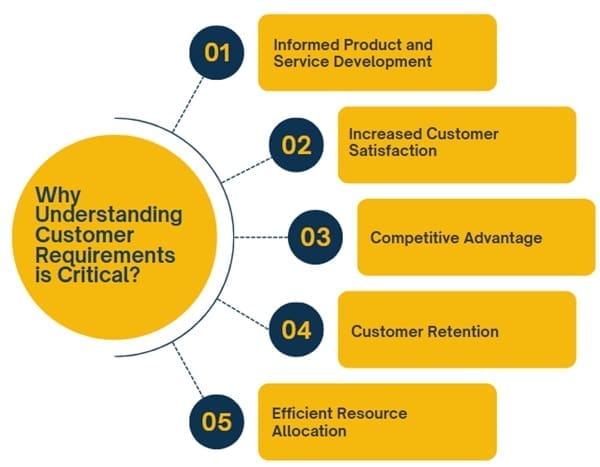
Informed Product and Service Development
By understanding customer requirements, businesses can design and develop products or services that meet customer expectations. This understanding helps ensure that the product is relevant, functional, and adds value, increasing the likelihood of success in the marketplace.
Increased Customer Satisfaction
When a business meets or exceeds customer requirements, customer satisfaction improves. Satisfied customers are more likely to return, make repeat purchases, and recommend the product or service to others. This positive customer experience fosters loyalty and long-term relationships.
Competitive Advantage
In a competitive marketplace, businesses that understand customer requirements have a significant edge. Meeting these requirements allows companies to differentiate themselves from competitors. A product that effectively meets customer needs is more likely to stand out, attract more customers, and build brand loyalty.
Customer Retention
Fulfilling customer requirements is essential for retaining customers. When customers feel that their needs are being met, they are less likely to switch to competitors. Understanding and anticipating customer needs fosters long-term relationships that result in repeat business.
Efficient Resource Allocation
Identifying and prioritizing customer requirements helps businesses allocate resources effectively. Instead of spreading resources thinly across non-essential tasks, businesses can focus their efforts on areas that have the greatest impact on customer satisfaction and business success.
Challenges in Identifying and Meeting Customer Requirements
While understanding customer requirements is vital, businesses often face challenges in this area. Some of the common challenges include:
- Changing Customer Needs
Customer requirements can evolve over time due to various factors, such as technological advancements, market trends, or shifts in customer preferences. Businesses must continuously monitor customer needs and adjust their offerings accordingly. - Complexity of Diverse Customer Bases
A diverse customer base presents a challenge for businesses in understanding the specific requirements of different segments. Customers from various backgrounds may have different expectations, making it difficult to satisfy everyone. Segmentation and personalized strategies can help address these diverse needs. - Limited Resources
Meeting all customer requirements can be challenging, especially for small businesses with limited resources. Prioritizing critical requirements while managing resource constraints is essential. Effective use of data and insights can help businesses focus on what matters most. - Data Overload
With the increasing volume of customer data available from various sources, businesses may experience data overload. Extracting actionable insights from large datasets can be overwhelming. Businesses must have effective data management and analysis strategies to turn data into valuable information. - Balancing Cost and Quality
Sometimes, meeting every customer requirement can lead to higher production costs. Businesses need to strike a balance between fulfilling customer needs and maintaining cost-efficiency. This requires careful planning and strategic decision-making.
Final Words
Customer requirements are essential in driving the development of products, services, and customer experiences that meet customer expectations. Understanding and prioritizing these requirements leads to higher customer satisfaction, greater loyalty, and a competitive advantage in the market.
By continuously engaging with customers and adapting to their needs, businesses can ensure that they remain relevant and successful. However, businesses must also be mindful of the challenges associated with identifying and meeting customer requirements, such as evolving customer needs and limited resources.
By leveraging effective methods to gather customer insights, businesses can navigate these challenges and create products and services that deliver real value to their customers.















